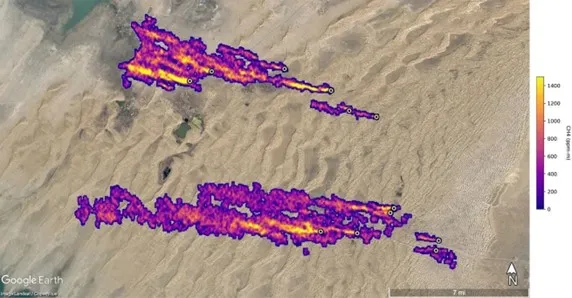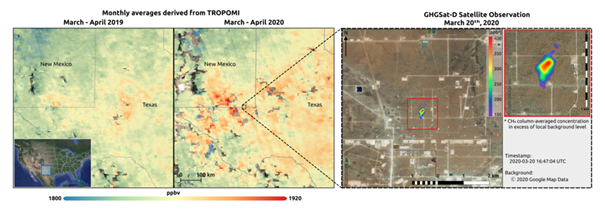
How Satellite-Derived Bathymetry Enables Coastal Monitoring and Protection
Editor’s note: This article was written as part of EO Hub – a journalistic collaboration between UP42 and Geoawesome. Created for policymakers, decision-makers, geospatial experts and enthusiasts alike, EO Hub is a key resource for anyone trying to understand how Earth observation is transforming our world. Read more about EO Hub here.
Mapping the global sea floor is vital in aiding our understanding of our planet and its climate, but with an estimated 75% of the sea floor unexplored, the world’s vast oceans are still largely unknown.
When it comes to our daily lives, the most crucial areas for us to focus on are the coasts. To understand and predict coastal change, we need accurate, large-scale measurements of key parameters, including bathymetry. However, currently, nearly 50% of the world’s coastal waters remain unsurveyed.

Image showing areas of global seafloor considered to be mapped by General Bathymetric Chart of the Oceans (GEBCO). Grey areas depict coverage of as of 2021, red areas are additions for 2022. Credit: The Nippon Foundation-GEBCO Seabed 2030 Global Center (GDACC) on behalf of Seabed 2030; Source: seabed2030.org
Our vital coastal regions
The shallow water zones near the coast are home to around 10% of the world’s population, playing host to many megacities. These low-lying regions are also of the utmost importance for industrial applications—such as the safe navigation of ships—as well as for coastal protection and management. Coastal areas are also highly dynamic, particularly vulnerable to natural and human-induced changes, impacted by factors including erosion, extreme weather events, sea-level rise, and population movements. Continuous monitoring of the world’s coasts is a necessity.
Gathering bathymetric data for shallow coastal waters has always been a challenge as traditional methods such as sonar or LiDAR are time-consuming and expensive to carry out. As a result, for a large number of these coastal regions, such data is either unavailable or decades old.
One of the promising technologies to bridge this information gap is satellite-derived bathymetry (SDB), which is using multispectral optical data to estimate the depth of near-shore waters.
How does it work?
Satellite data has been used to map the ocean floor for several decades using techniques such as radar altimetry, wave kinematic, and even space-based lasers. Such methods allowed scientists to generate an approximate model of the ocean floor but the resolution of such methods are not enough for shallow waters (down to a depth of 30m).
Satellite-derived bathymetry uses optical image data to try to estimate the depth of the water in a given place. One of the most effective algorithms to do that is called multispectral signal attenuation, which involves analyzing imagery using a combination of spectral bands. As different wavelengths penetrate the water to a greater or lesser degree, the light attenuation can be measured, and elevation ratios are created by analyzing the colour profile and spectral characteristics of coastal areas with known depths. Algorithms are then used to infer water depth from new spectral information by comparing it to known depths of similar areas. With this approach, it is possible to estimate the depth of the water, even down to 30 meters, with a high level of accuracy.

Source: USGS: https://www.usgs.gov/special-topics/coastal-national-elevation-database-%28coned%29-applications-project/science/satellite
The better the resolution and the more spectral bands used in the data, the more accurate the results will be, but even lower resolution data can provide valuable information.
Today, data for SDB is measured from various satellite sources, such as Landsat 8 (NASA), Sentinel-2 (ESA), and Pleiades (Airbus). Recently, Airbus launched a new constellation called Pleiades Neo which has a very high resolution of 30cm available via Up42 marketplace among others. More importantly, it features a new spectral band called deep blue with wavelengths of 400-450 nm, specifically designed for satellite-derived bathymetry and atmospheric corrections. This new spectral band allows for much better interpretation of optical data for shallow waters than previously possible.
What are the benefits of SDB?
SDB is a cost-effective and time-efficient alternative to traditional on-site methods. It doesn’t require ships or human divers, making it a safer method for data collection, and also dramatically reducing the environmental impact caused by more intrusive methods.
Airborne LiDAR bathymetry is another technique to measure the seafloor from the skies. It uses an active sensor which beams a green laser light, as opposed to a passive optical satellite sensor. The use of LiDAR gives higher accuracy than SDB, but at a much higher cost, as it requires dedicated airborne survey and only produces data for a relatively small area. SDB, on the other hand, utilizes existing satellite infrastructure, the images cover a wider area, and data can be captured multiple times a day, meaning it has both repeatability and scalability. It is also time-efficient and can provide near-real time monitoring, making it ideal for regular oceanographic management.
SDB is not without its disadvantages. For instance, it can lack spatial resolution when compared to other methods. Depending on the type of technology used, satellite imagery may be affected by weather conditions, water quality, and the presence of vegetation. It has limited effectiveness in deeper waters. Despite these limitations, SDB is a powerful tool for measuring shallow waters, and can be used very effectively in combination with other methods—above all because the data can be captured with such regularity.

Source: https://business.esa.int/projects/international-satellite-derived-shallow-water-bathymetry-service
Applications of SDB
SDB in coastal regions can play a key role in a variety of practical applications that are essential to our current way of life and preservation of our future.
Bathymetry is an important tool for many industries. In terms of trade and logistics, accurate bathymetric data is essential for ships and port authorities to ensure safe navigation. Sea transportation is an essential component in over 90% of international trade, and the ships used to transport these goods are growing ever bigger. Understanding the shape of the ocean floor is a vital input for models of ocean currents and waves, and therefore bathymetry can help to improve sea-state monitoring, including wave prediction and more. For the telecommunications industry, bathymetry is used to plan the routes of subsea fiber-optic cables, avoiding coral reefs, shipwrecks, sensitive areas and geological obstructions. Around 474 of these cables are responsible for transmitting 99% of international data (according to TeleGeography, 2021).

Map of global subsea fiberoptic cables. Source: www.submarinecablemap.com
Energy companies also rely on bathymetry to explore and extract oil and gas, as well as using it to secure new energy resources like wind and ocean energy. It is also used to monitor sedimentary movements in the corridor between the coast and the energy exploitation site to ensure the integrity of cables connecting wind turbines to the shore. These cables are a critical part of the infrastructure for wind energy—which is the fastest growing blue economy sector, as of 2019.
Bathymetry is also used to estimate and control the volume of materials extracted from the seabed and monitor changes caused by dredging activities. Dredging is essential for many industrial and civil engineering applications, but can contribute to coastal erosion and environmental damage if not carefully managed. More broadly, bathymetry is used to better understand coastal erosion caused by both natural and human factors, and can aid in better management of our coasts, including the development of innovative coastal defense systems for risk mitigation and post-crisis analysis.
Accurate and precise knowledge of the seabed is also key in protecting undersea conservation sites and archaeological areas. One way that bathymetry data can help with this is by modelling underwater noise caused by human activity. Furthermore, the technology contributes to food security, helping to identify locations for offshore aquaculture cages, habitat mapping and impact modeling to meet the increasing demand for seafood.
Bathymetry even aids in issues of sovereignty: sovereign waters are defined by the limits of the continental shelf, as dictated by the United Nations Convention on the Law of the Sea (UNCLOS). Bathymetry helps to establish these boundaries and justify the rights of a coastal state to explore (and exploit) its maritime territory.
Satellite-Derived Bathymetry: An essential tool for the future
The monitoring of coastal waters is becoming increasingly important, both for business and for tracking and mitigating climate change. With this in mind, it is clear that satellite-derived bathymetry will be an essential tool for hydrographers in the near future as the technology continues to mature.
The benefits of SDB include its ability to be applied completely remotely, with no associated environmental impacts or human risks, and its cost-effectiveness and time-efficiency compared to traditional methods, making it an important tool for estimating the depth of coastal waters. It still has some limitations in terms of accuracy and availability of data, as well as its effectiveness in deeper waters, but we can expect significant developments in this space in the coming years.
The emergence of SDB takes advantage of the major shift and acceleration in the Earth Observation (EO) market, as the emergence of low-cost small satellite technology continues to democratize access to EO data. Leading EO companies are launching new constellations with spectral bands supporting SDB applications, such as Pleaides Neo and Deep Blue, and the technology is expected to be disrupted in the future by computer vision and deep learning models.
With the ability to remotely, cost-effectively, and efficiently monitor coastal waters, SDB is poised to play a crucial role in our understanding and management of these vital resources.
Did you like the article? Subscribe to our monthly newsletter:









